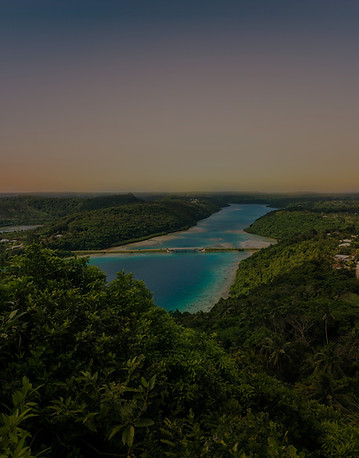

The History of the Kingdom of Tonga

More than a 1,000 years ago, Tongan rulers created a hierarchical system of monarchy very similar to that of European dynasties. The structure included commoners, nobility and above all royalty, with the royal title passed down from father to eldest son. This patrilineal mode of succession continues in modern times. Today’s Tongan monarchy remains an influential and powerful entity in the modern Kingdom, although one of the more contemporary Kings, George Tupou V, has introduced concessions to accommodate a more democratic state. The present monarch is Tupou VI. Historically, one of the most loved and admired members of the Tongan Royal Family was Queen Salote. Her choice to show respect by sitting in an uncovered carriage in pouring rain at the 1953 Coronation of Queen Elizabeth made her famous around the world.
THE SOUTH PACIFIC’S
ONLY MONARCHY

Around 3,000 years ago, the Lapita people from Southeast Asia migrated west via the Malay peninsula and the remote islands of the East Indies to settle in the scattered and pristine islands of the South Pacific. In Tonga, these original ancestors of today’s Polynesian people founded settlements at Toloa – near the present day location of Fua’amotu International Airport – and at Heketa, on the northeastern edge of Tongatapu. Three millennia later, reminders of these ancient times are dotted throughout the islands. The fascinating Ha’amonga a Maui trilithon still stands as an imposing legacy of early Tongan ingenuity. Eventually settling in the far-flung island groups of the Kingdom’s archipelago, these early ancestors also developed a distinctive culture that still underpins traditional Tongan life in more contemporary times.
POLYNESIAN BEGINNINGS

The northern island group Vava’u was discovered in 1781 by Spanish navigator, Don Francisco Antonio Mourelle, commander of the ship La Princesa. Mourelle named Vava’u’s well-protected harbour Port of Refuge, and claimed the beautiful islands in the name of Spain. Over ensuing years early traders continued to visit Tonga and tensions grew between Europeans and Tongans. In 1806, this disquiet culminated in the rasacking of the ship the Port-au-Prince in Lifuka in the Ha’apai island group. With the exception of a young cabin boy named William Mariner, the entire crew was killed. The lad was nurtured by Chief Finau in Lifuka for four years, learning the Tongan language and becoming immersed in the Kingdom’s tradition and protocol. Mariner’s book ‘An Account of the Natives of the Tongan Islands’ is now recognised as a significant insight into early Tongan life, customs and culture. Another navigator to visit Tongan waters was Captain William Bligh, and Fletcher Christian’s infamous mutiny of the HMS Bounty actually occurred near the volcanic island of Tofua in the Ha’apai group.
TWO CULTURES

In 1773, the British explorer and navigator Captain James Cook visited Tonga’s southern islands of Tongatapu and ‘Eua. He returned in 1777 and spent two months exploring and charting the Tongan archipelago, using his legendary skill as a cartographer producing accurate charts still in regular use until recent times. During this voyage, a lavish feast for Cook and his men was presented by Chief Finau in the village of Lifuka in the Ha’apai island group. Cook was so impressed by Tongan hospitality that he dubbed Tonga the ‘Friendly Isles’, not realising the amiable and social nature of the locals who actually concealed a plan to raid his boats and kill Cook and his crew. The conspiracy was only foiled at the eleventh hour, after a dispute between Finau and other village nobles, and Cook sailed away oblivious of his intended fate. Ironically his positive and complementary name for the Kingdom of Tonga remains in common use.
CAPTAIN JAMES COOK

Initial European contact with Tonga came in 1616, when the Dutch navigators Wilhelm Schouten and Jacob Le Maire discovered the Niuas, the small northern most islands of the Tongan archipelago. Contact with the local Niuas islanders was restricted to a minor altercation with a Tongan canoe. In 1643, the Dutch extended their exploration when Abel Tasman visited the Tongan Islands of ‘Ata, ‘Eua and the largest island of Tongatapu. Unlike the first Dutch contact further north in 1616, Tasman’s ships the Heemskerck and the Zeehaen stopped for water and replenishments, and Tasman also traded with the local communities.
FIRST EUROPEAN CONTACT

The Kingdom of Tonga’s history stretches back over 3000 years, beginning with the migration of the Lapita people from the mainland and islands of Southeast Asia. Both Tonga’s culture and customs began with these earliest of Polynesians, and many ancient traditions have continued respectfully through to the present day. The arrival of European explorers and navigators from the 17th century saw the introduction of Christianity, now an integral part of the modern Kingdom of Tonga. Experiencing the beautiful harmonies filling Tongan churches every Sunday is an essential experience for all visitors to the Kingdom. Throughout the ensuing centuries, Tonga’s authentic culture has continued to be respected and maintained across the pristine islands of this Polynesian archipelago.